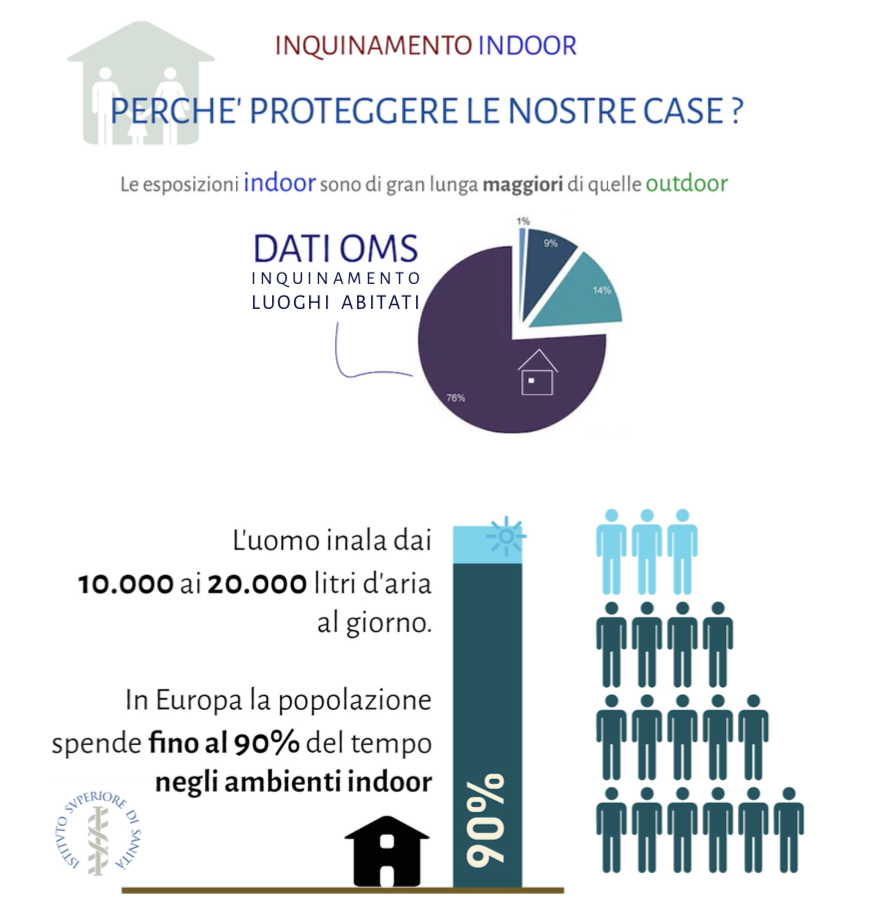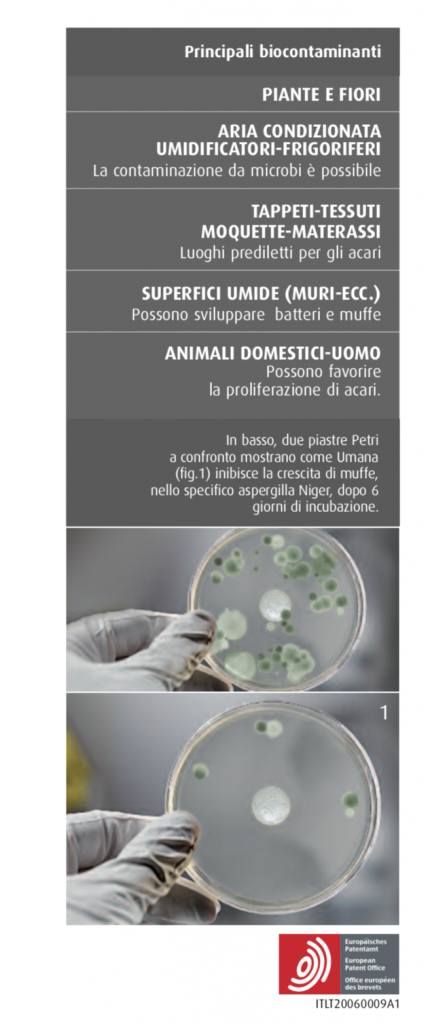
TO BREATHE CLEAN AIR
In Italy, the Ministry of the Environment defines indoor pollution as the presence in the air of confined environments, of chemical, physical, biological pollutants not naturally present in outdoor air.
The indoor environment is always more polluted than the outdoor environment, as these additional elements are added to the already polluted air.
This type of pollution can be caused by personal activities, workers' professional activities, inadequate ventilation, construction materials, furniture (one of the main pollutants is formaldehyde), but also the same products used for cleaning the environment.

Sick Building Syndrome (SBS) - Toxic Home Syndrome (THS)
"building related illnesses".
Definitions according to I.S.S. studies and scientific research specific to the identification of correlations between indoor pollution and pathologies with consequent risk factors for the most sensitive subjects (children, elderly, people with respiratory and cardiac pathologies).
Indoor air, in the definition (THS) contains more than 900 potentially harmful chemicals in addition to the main items listed below:
DANGEROUS SUBSTANCES
- Carbon monoxide
- Tobacco smoke
- Volatile organic compounds (VOCs)
- Asbestos
- Wood smoke
In particular, PAHs are compounds containing only carbon and hydrogen atoms (i.e. unsubstituted PAHs and their alkyl-substituted derivatives), while the more general name of "polycyclic aromatic compounds" also includes functional derivatives (e.g. nitro-PAHs) and heterocyclic analogues (e.g. aza-areas).
WHAT IS THE TRAINING OF PAHs?
PAHs are formed during incomplete combustion or pyrolysis of organic material containing carbon, such as coal, wood, petroleum products and waste.
The mechanism of formation of PAHs during the combustion process is quite complex; it consists mainly in the repolymerization of hydro carbide fragments, which are formed during the process known as cracking (the fragmentation in numerous parts of the larger fuel molecules in contact with the fire).
The repolymerization reaction occurs mainly under conditions of oxygen deficiency and, consequently, the rate of formation of PAHs increases as the oxygen/fuel ratio decreases.
Synthetic wool fibres (rock wool and glass wool) -Pesticides (used for mosquitoes and other insects)
Sulphur and nitrogen oxides
Ozone (emitted by certain types of laser printers and copiers)
Polycyclic aromatic hydrocarbons (PAHs)
It is therefore clear that there are many sources of PAH training:
1 - various industrial processes (in particular: production of aluminium, iron and steel, foundries);
2 - coal and oil processing;
3 - power generation plants;
4 - incinerators;
5 - domestic heating (especially wood and car- bone);
6 - vehicular emission;
7 - forest fires;
8 - combustion in agriculture;
9 - tobacco smoke;
10 - volcanoes, which may represent a natural source with a significant local impact.
Because of these numerous sources, PAHs are ubiquitous and spread to all environmental compartments. During each formation process, PAHs are always present as a class (never as individual compounds) in complex mixtures containing other substances and chemical classes.
For the same reason, they are found as a class in the various environmental compartments and matrices (air, water, soil and food) to which the population is commonly exposed.
INDOOR POLLUTION
WHY PROTECT OUR ENVIRONMENT
Man inhales over 15,000 liters of air a day and spends up to 90% of the time indoorswhere it is in direct contact with harmful substances that are deposited on the walls, consequently exposure indoors is much greater than outdoors.

WHERE THE USE OF HUMAN
The application of Umana is particularly recommended for structures such as:
SCHOOLS
Sanitizing and self-cleaning
HOSPITALS
Excellent bactericide especially in a sterile environment
RESIDENTIAL COMPLEXES
PUBLIC PLACES
CHILDREN'S BEDROOMS
VILLAS AND HOTELS
where a strong antibacterial and sterilizing action is required with washable properties
BIOCONTAMINANTS



